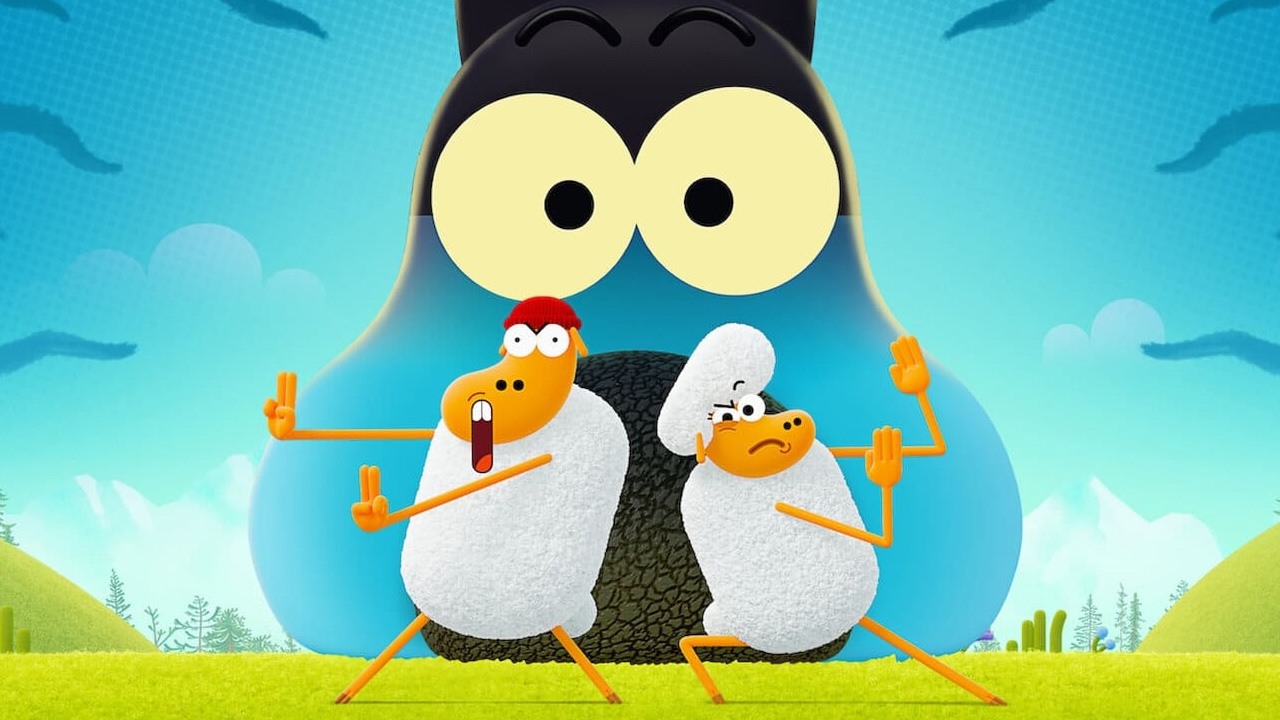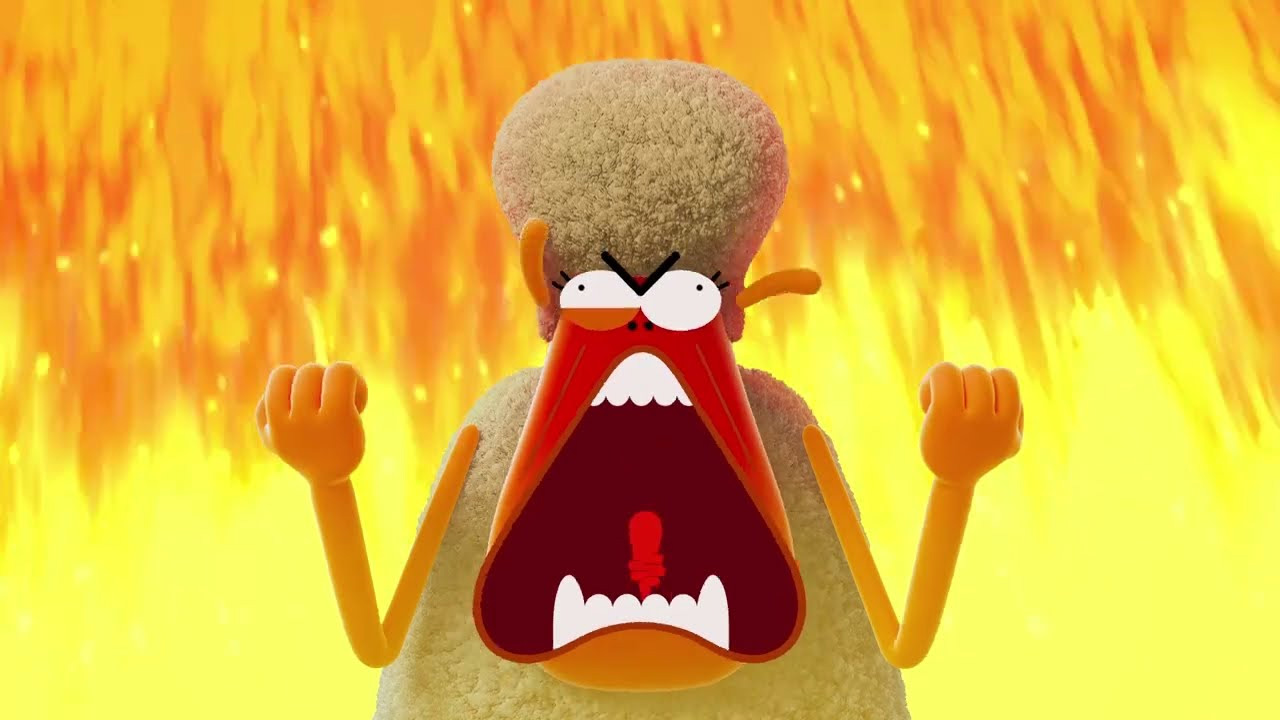I Kid You Not: Netflix’s Karate Sheep should be world famous

Who said family films aren’t cinema? In his column I Kid You Not, Liam Maguren critically evaluates the excellence in kids flicks and writes them into the history books. Here, he shifts focus to a series, and with new episodes of Karate Sheep now on Netflix, Liam bows to the show’s comedic chops and wonders why it’s not a mega-hit.
A particular kind of cartoon show used to rule the world. The plot never changed. The characters stayed the same. No episode would be longer than 10 minutes. The show’s only objective? To stamp a big, goofy smile on your face.
Household names like Popeye, Bugs Bunny, and Mickey Mouse regularly appeared in theatres week after week. It’d be easy to blow them off as basic crowdpleasers, but as any cinema nerd will tell you, it took serious artistry and comedic craft to create these mini-movie titans. Those efforts were acknowledged within the industry, with Tom and Jerry winning the Best Animated Short Film Oscar seven times—and every one of those films involved a cat trying to catch a mouse.
Approaching the new millennium, these cartoons took more prominent roles on television. Whether it was Looney Tunes re-runs or the ’90s-defining lunacy of Ren & Stimpy, these cartoons found a different but significant space with a half-hour segment that could neatly fit two to three episodes.
There were key spaces to compete for, like the after-school hour or the prestigious Saturday morning slot. Anyone in that spotlight had the crown; even jaded adults would recognise their rule. That same cartoon revelry seems unreachable within the streaming ecosystem.
I can’t help but feel that, in a different timeline, Netflix’s Karate Sheep would dominate the globe. It’s a wildly goofy, visually inventive French cartoon with a classic hero (Wanda the karate sheep), a classic villain (Wolf the hungry wolf), and a classic sidekick (Trico the inventor sheep).
Every episode contains seven-minute micro episodes sardine-packed with the sort of wacky slapstick that seems beyond the mind of mere mortals. Why does a martial arts lesson suddenly turn into a game of comet volleyball? How does a brass boiling pot somehow become the seat for a sadistic plant-based rollercoaster? Words cannot do the absurdity justice.
With no dialogue (just some committed voice actors grunting and yelling a storm in the recording booth), Karate Sheep lives and breathes through its hyper-exaggerated animation and flurry of visual gags. When Wanda chops, her hand expands to the size of her body. When Wolf gets punched, his whole face gets Picasso’ed. When Trico tries to explain the rules of football (don’t ask), everything shifts to cut-out animation. Why? Because it’s just another way to maximise the silliness of the show.
When Karate Sheep isn’t shotgunning a Monster Energy load of comedy, it settles on a visually distinctive look that combines 3D elements with realistic textures and emoji-fied facial expressions. It may not reinvent the wheel, but it’s a wheel you’ll distinctively identify as being Karate Sheep.

Why is it, then, that Karate Sheep seems doomed to never achieve the distinction of Roadrunner and Coyote? It’s partly due to crowded competition, and partly due to the broader problem of streaming’s inability—or incompetency—to find appropriate spaces for their content.
The crowded competition part comes as no surprise. We’ve never had so much TV dropping on us on a weekly basis, making it that much harder for any one series to stand out among the masses. It’s no different with kids programming.
What makes it particularly difficult for these simple, short-form cartoons is that they’re forced to abide by a release method more suited to long-form series. In parts of Europe, Karate Sheep enjoyed a more traditional network release. Globally, Netflix dumped all 13 episodes of a season at once. Remember: each episode contains three micro-episodes, so that’s almost 40 lots of Karate Sheep instantly ready to binge.
Who in their right mind’s going to binge all that? I love Karate Sheep. I’m not in my right mind. I’m still not going to marathon this insanity.

Sure, it gives people the power of choice. Watch as much, or as little, Karate Sheep as you like, right? But shows like Karate Sheep, which thrive on brevity and spontaneity, aren’t the kind you bookmark or save on a watchlist. They pop out of nowhere to warm the crowd up before the main feature. They move so fast and vibrantly that anyone channel-surfing has to stop and take notice.
How’s a show like this meant to get that kind of exposure on Netflix? You might catch a glimpse of it in the headline section if the algorithm deems you worthy. Otherwise, that Karate Sheep thumbnail’s got to do a lot of heavy lifting to do to stand out in the Netflix sea of thumbnails.
And it’s not just Netflix. None of the major streaming services know how to adequately highlight or make space for these small-dose cartoon shows. At least Disney still screens family shorts before their major features like the recent Carl’s Date—initially intended to be the pilot for Dug Days—before Elemental. (To this day, I’m incredibly thankful that director Lauren MacMullan’s outstanding Mickey Mouse short Get a Horse! played before every screening of ultra-mega-hit Frozen.)

So how could a streaming platform make space for silly, stupendous shows like Karate Sheep? One rather crude solution would be an opt-in feature that gave the service permission to play one of these 7-minute-long shorts before your selected feature. Perhaps they’re curated. Perhaps they’re randomly selected. Either way, we’re already trained to hit the ‘skip credits’ button or, as Prime Video users will know, the ‘skip ad’ function, so if I’m not feeling up for a bit of Karate Sheep before my weekly viewing of Extraction 2, that ‘skip short’ sign would make the whole setup fairly painless.
Another method could take the form of a showcase, powered by a bunch of unexpected silly shorts already on the service. Think Nickelodeon’s KaBlam!, or the ‘Special Broadcasts‘ Adult Swim conducts on their YouTube Channel, or any one of the kids variety shows that dominated the telly in the ’80s and ’90s.
I’m sure some dude in a suit would tell me why these ideas aren’t feasible for a streaming platform, but at the very least, we should recognise how not every show—especially top-tier short-n-sharp cartoons like Karate Sheep—benefits from the current way things are done.
Karate Sheep‘s ideal streaming platform is one that thrives off brevity and spontaneity. As it stands, the show’s best shot at becoming world famous doesn’t reside with Netflix—it resides in their TikTok account.














